Simple Balance-Building Exercises to Prevent Falls
Each year, more than one in four adults over age 65 in the United States experiences a fall—a startling statistic that speaks to the ways our bodies change with time. For many, the simple goal of moving confidently through daily life can feel less certain as balance, muscle strength, and flexibility shift. Yet, the power to nurture stability and prevent falls truly rests in small, consistent choices we make every day. This journey isn’t about chasing youth or perfect agility; it’s about embracing healthy ways to support the body you live in—honoring both its wisdom and its needs. That's why we've expanded our list of evidence-based exercises offer practical, step-by-step guidance for building balance at home, whether you’re just getting started or looking to add gentle challenges. They're designed for every ability, complete with modifications, safety reminders, and ways to progress at your own pace. As you explore each movement, remember that every small improvement counts. With support, patience, and gentle self-encouragement, you can increase your confidence, reclaim everyday independence, and reduce your risk of falling—one simple practice at a time.
1. Single-Leg Stand
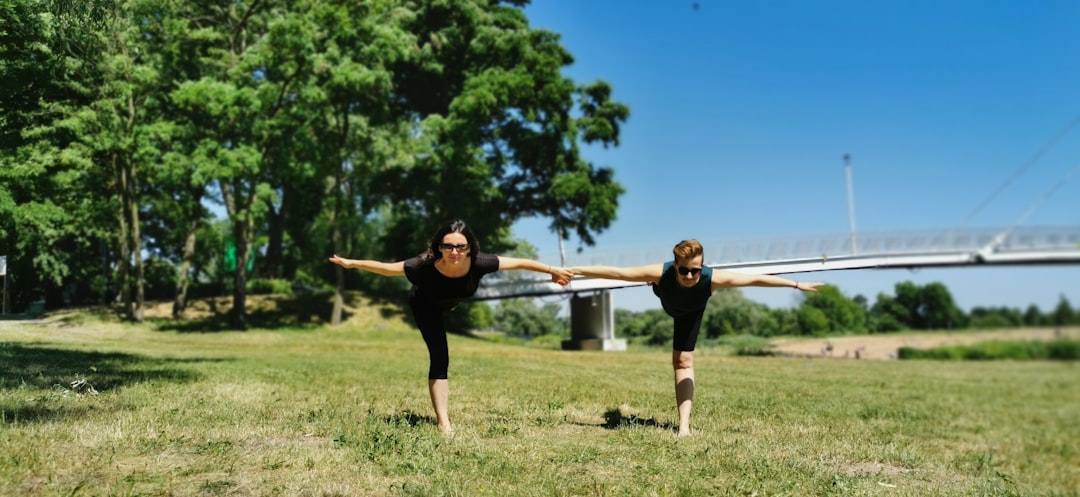
The single-leg stand lays the groundwork for better balance by teaching your body to stabilize when weight shifts to one side. Begin by standing tall behind a sturdy chair or countertop, hands lightly resting for support. Shift your weight onto your left foot, slowly lifting your right foot just an inch or two off the ground. Hold your gaze forward and breathe steadily as you focus on finding a steady point of balance. Try to maintain this posture for up to 10 seconds—then gently return the foot and repeat on the opposite side.For added challenge, increase your hold time or attempt the exercise with less reliance on your hands as confidence grows. Those seeking more stability can start with both hands gripping the support and progress to using just fingertips. This simple move strengthens ankle, leg, and core muscles while fine-tuning your proprioception—the body’s sense of position. Practicing single-leg stands two to three times a week can help make everyday tasks, from standing in line to stepping into a shower, feel a bit more secure.
2. Heel-to-Toe Walk
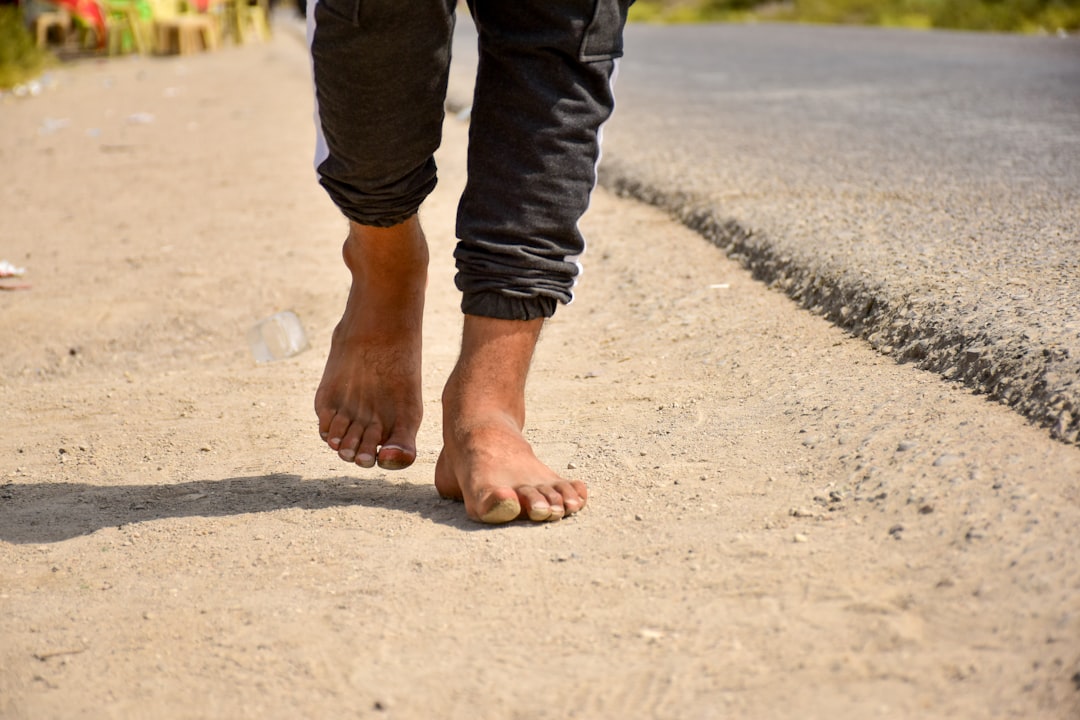
The heel-to-toe walk is a gentle yet powerful tool for challenging your balance in motion. Start by finding a clear stretch of floor, ideally near a wall for occasional support. Stand tall, then place your right foot directly in front of your left so that the heel nearly touches the toes. Take a slow, controlled step forward, mimicking a tightrope walk, with each step heel-to-toe for about 10 steps. Keep your focus ahead, not on your feet, to help maintain alignment.If needed, lightly touch a wall or the back of a chair for balance. With practice, you might try walking backward or with arms outstretched for an extra challenge. This exercise does more than improve balance—it enhances the coordination needed for safe walking, making it easier to navigate curbs, crowds, or uneven ground. Small, regular sessions can build resilience against falls and foster a new confidence in every stride.
3. Side Leg Raises
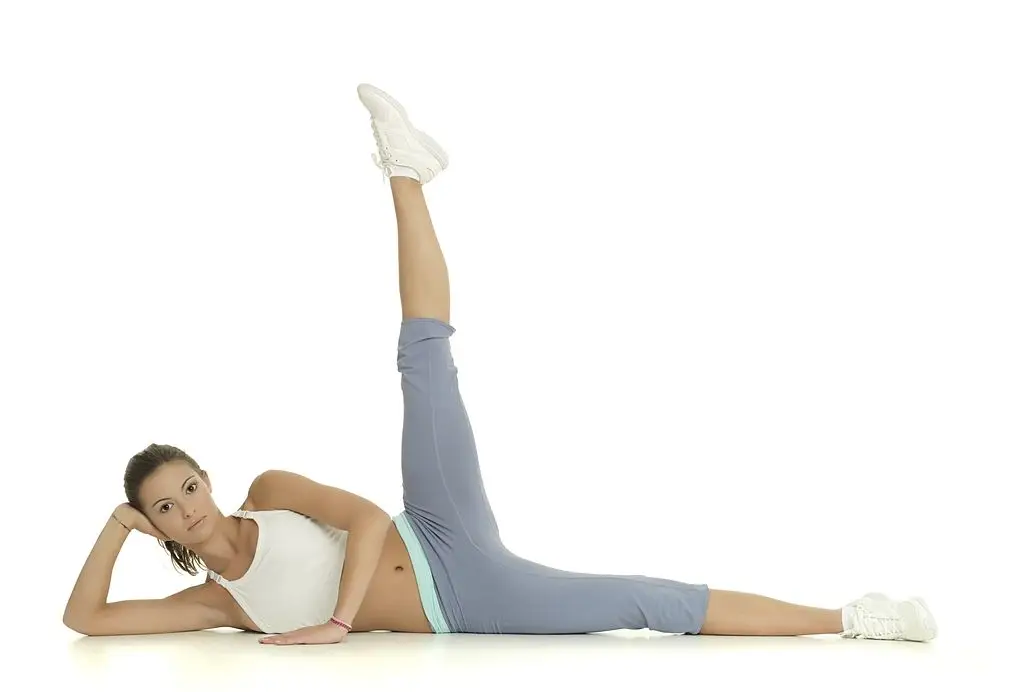
Side leg raises serve as a supportive friend to your hips and lower body, both of which are vital for staying steady on the move. Stand behind a sturdy chair, feet hip-width apart. While holding the back of the chair for safety, slowly lift your right leg out to the side—keeping your toes facing forward and your body upright. Pause briefly, then lower the leg back down with control. Aim for 10-15 repetitions on each side.If you’re looking for a challenge, try letting go with one hand, or increasing the number of repetitions. For those just getting started, even a few slow lifts are worthwhile. This movement gently strengthens hip and outer thigh muscles, both of which play a major role in side-to-side stability. With practice, you’ll notice improvement in how you step, turn, or recover your balance during daily life.
4. Sit-to-Stand Exercise
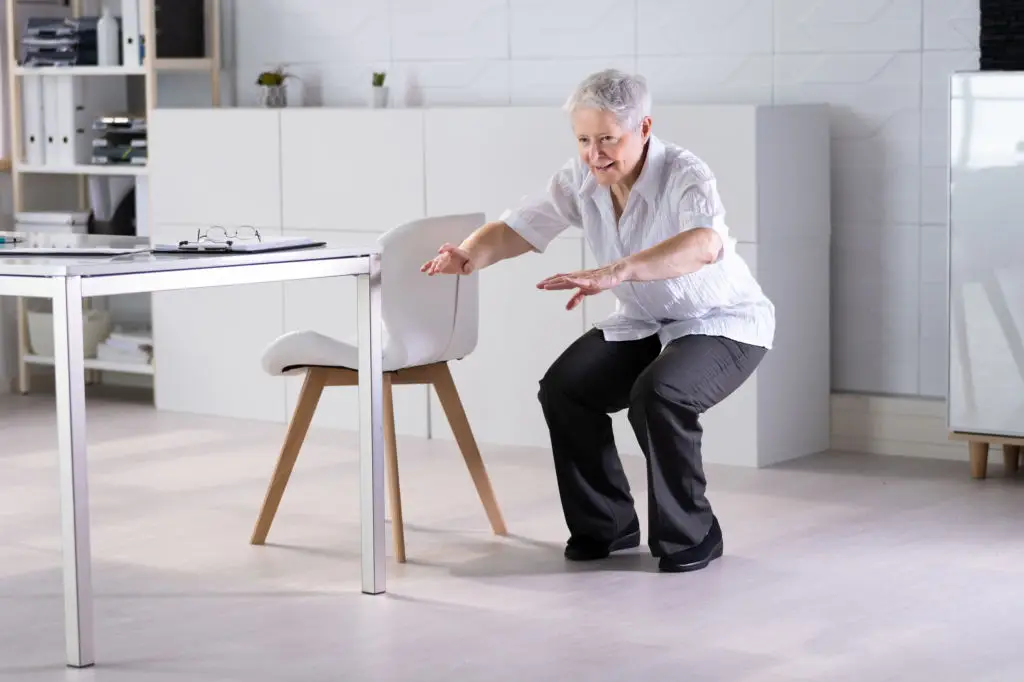
Mastering the sit-to-stand makes everyday life—getting up from a chair, toilet, or car seat—a smoother experience. Start with a sturdy chair and position yourself so your feet are flat and hip-width apart. Cross your arms or let them rest on your thighs for extra momentum. Lean forward slightly from the hips, push through your feet, and stand up tall. When ready, gently lower yourself back down, using the armrests or a second chair at your side for safety if needed.Try performing 8-10 repetitions, resting as needed. If standing completely isn’t yet comfortable, practicing a half-squat and returning to sit is perfectly supportive. As you gain confidence, increase repetitions or reduce arm support. This practical exercise strengthens your thighs, hips, and core—champions of everyday mobility and fall prevention.
5. Marching in Place
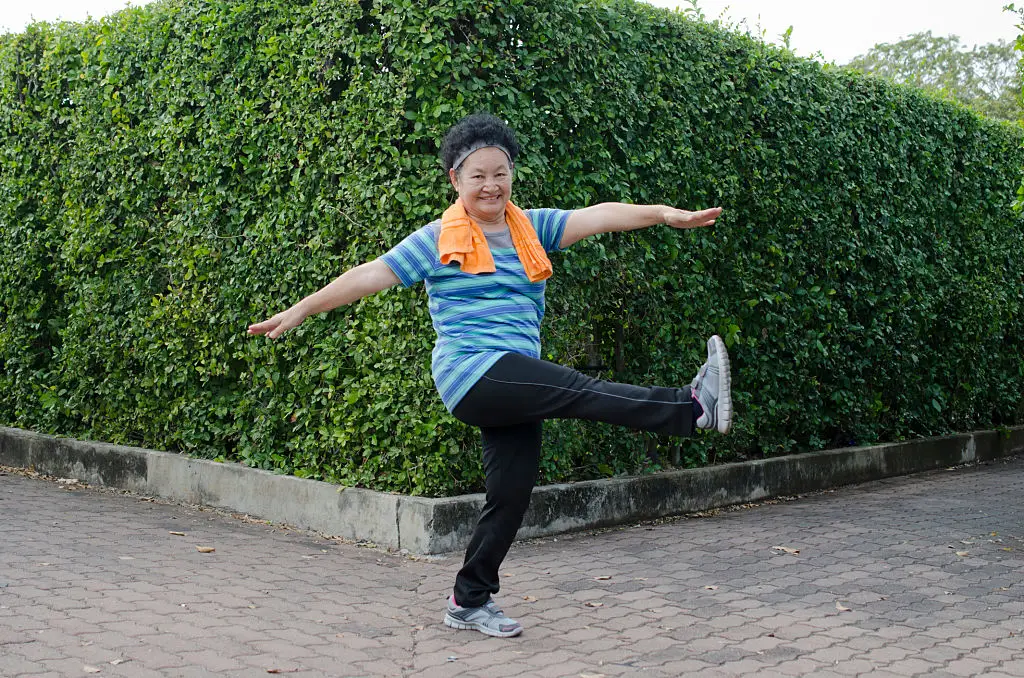
Marching in place is as simple as it sounds, but it offers dynamic balance training and coordination at any fitness level. Stand tall beside a chair or countertop, resting your fingertips for security if needed. Gently lift your right knee to hip height, then lower it and alternate to the left. Let your movements be slow and controlled rather than rushed. Aim for one minute, focusing on steady rhythm and posture.You can amplify the challenge by swinging your opposite arm upward, or by marching for longer intervals as you feel sturdier. This exercise not only builds leg strength but also reinforces your body’s ability to adjust to movement—critical for catching yourself if you stumble or need to change direction quickly. Even short bursts of mindful marching can renew your sense of balance and readiness for the day ahead.
6. Standing Weight Shifts
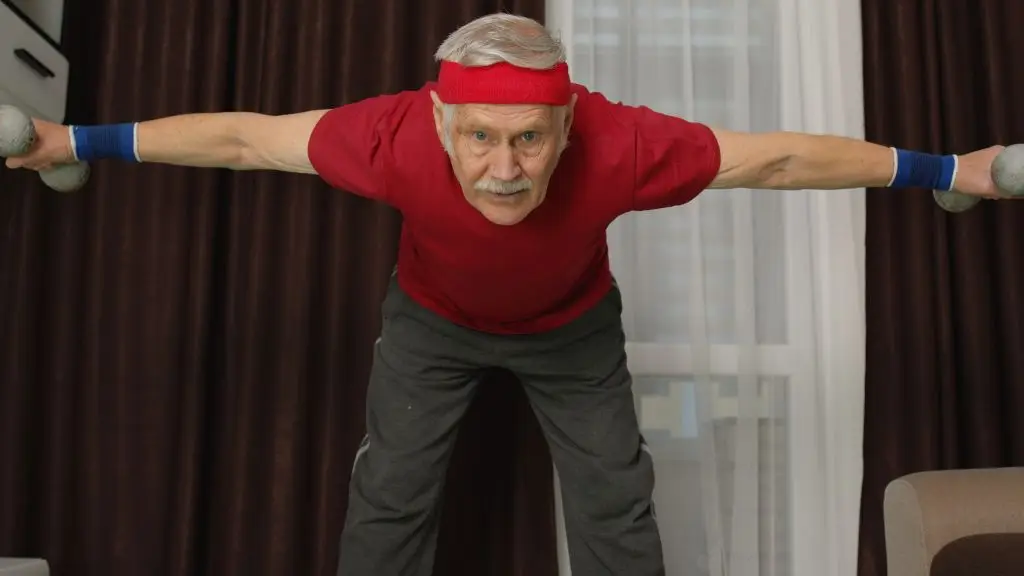
Standing weight shifts invite your muscles to gently practice the act of staying centered—even when weight moves from side to side. Stand feet hip-width apart, behind a solid counter or chair. Slowly shift your weight onto your right foot while lifting your left heel off the ground, then transfer back through center and onto your left, lifting your right heel. Continue this side-to-side motion for 10-15 repetitions.Start small: keep your hands in contact with support, and progress to using just fingertips or no hands at all. This exercise helps retrain the body’s balance systems, making everyday motions—like turning, reaching, or catching balance after a trip—feel more manageable. Integrate weight shifts into your warm-up or daily standing routine for noticeable improvement over time.
7. Toe Stands (Heel Raises)
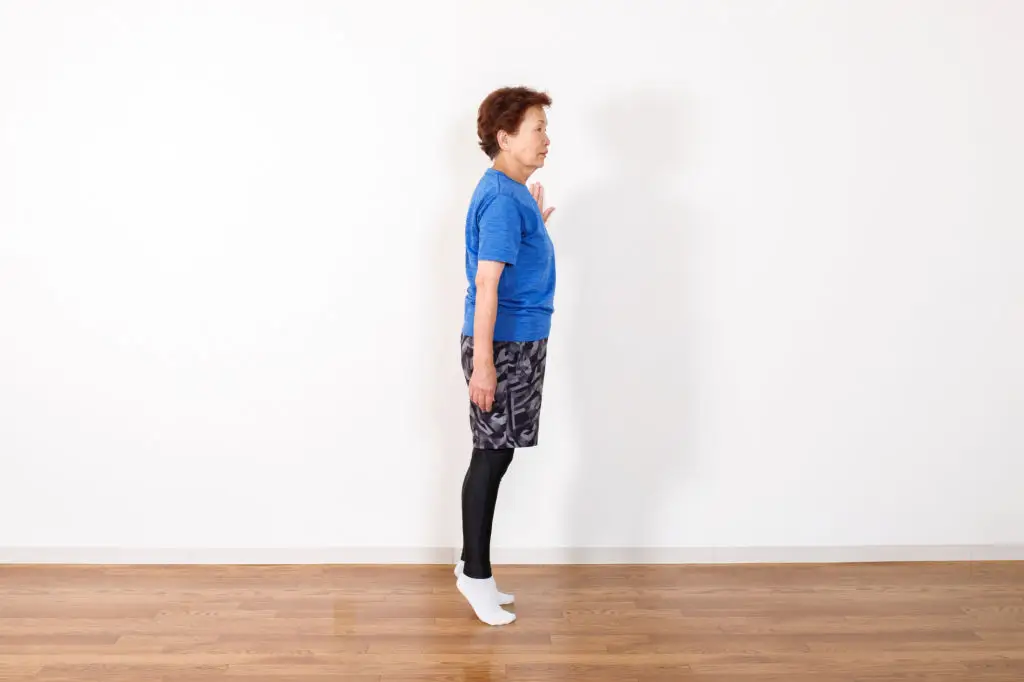
Toe stands, also known as heel raises, are an effective way to build strength in your calves, ankles, and the stabilizers that keep you upright. Begin by standing behind a sturdy chair with your feet about hip-width apart. Slowly rise onto the balls of your feet, lifting your heels as high as you can without straining. Pause at the top for a second or two, then lower your heels back down. Start with 10-15 repetitions.If needed, keep both hands on the support; progress by using just fingertips or attempting the movement without help. You can also add a brief hold at the top to challenge balance further. Toe stands help develop the lower-leg power that’s crucial for stability during stairs, uneven ground, and preventing ankle “rolls.” Try making them a regular part of your routine to walk—and recover from slips—with greater ease.
8. Step-Ups
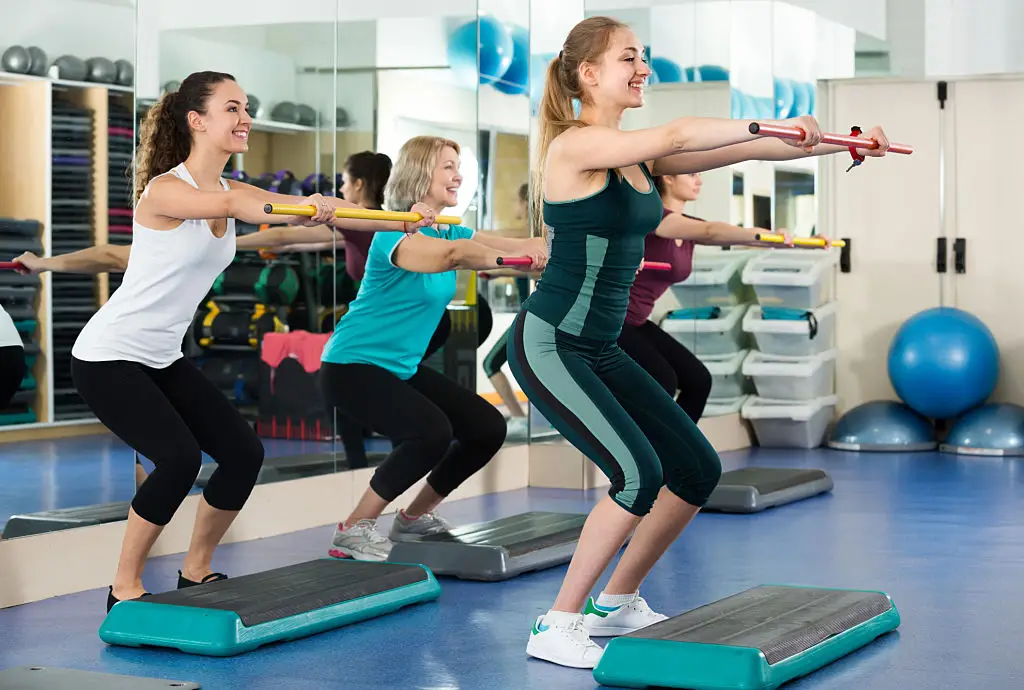
Step-ups mimic the everyday task of climbing stairs, making them one of the most functional exercises for fall prevention. Use a low, stable platform or bottom step, with a sturdy handrail or chair nearby for support. Start by stepping up with your right foot, bringing your left foot to meet it, then step back down in reverse. Alternate which foot leads, and aim for 10 steps per side.Modify by using a lower step or by pausing between each movement for added control. As you develop confidence and strength, increase the height or speed slightly. Step-ups build glute, quad, and hip muscle—critical for navigating stairs, curbs, and changes in terrain. Step mindfully and listen to your body, always prioritizing safety over speed.
9. Seated Leg Extensions
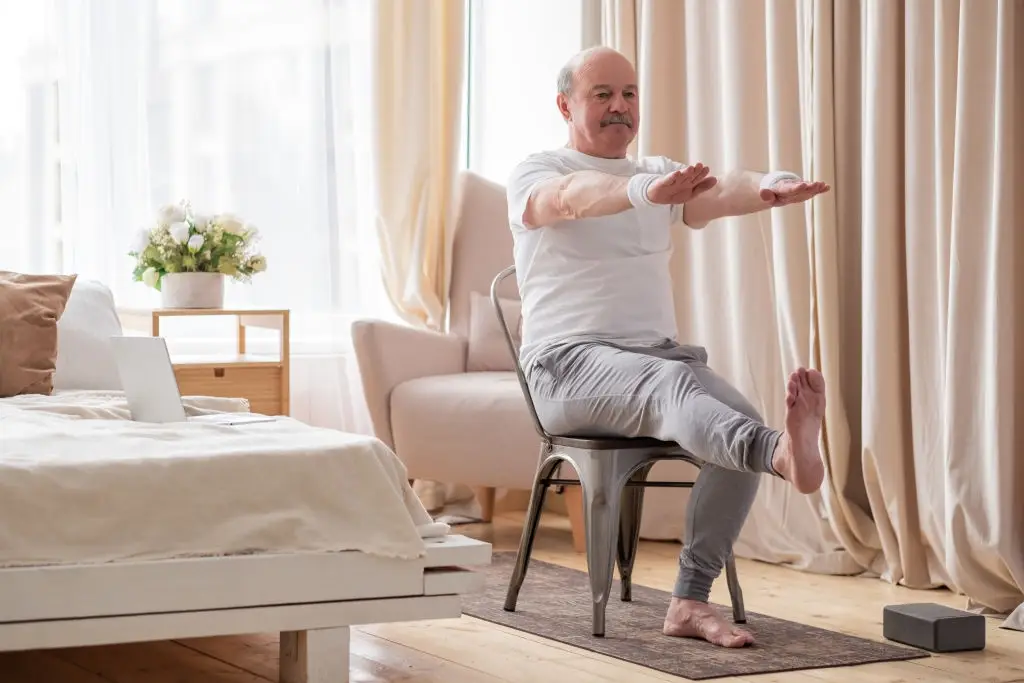
Seated leg extensions are a welcoming entry point for those eager to build strength safely from a chair. Sit upright in a sturdy chair, feet flat, hands resting by your sides for grounding. Slowly straighten your right leg in front of you, flexing the foot and holding for two seconds, then gently lower it. Swap legs and repeat, aiming for 10-12 repetitions per leg.To increase difficulty, hold the extension for a longer pause or add light ankle weights. This simple yet powerful exercise targets the quadriceps—muscles essential for standing, climbing stairs, and stabilizing your knees. Progress at your own pace, and celebrate each sign of increasing strength and stamina as an important victory.
10. Sideways Walking
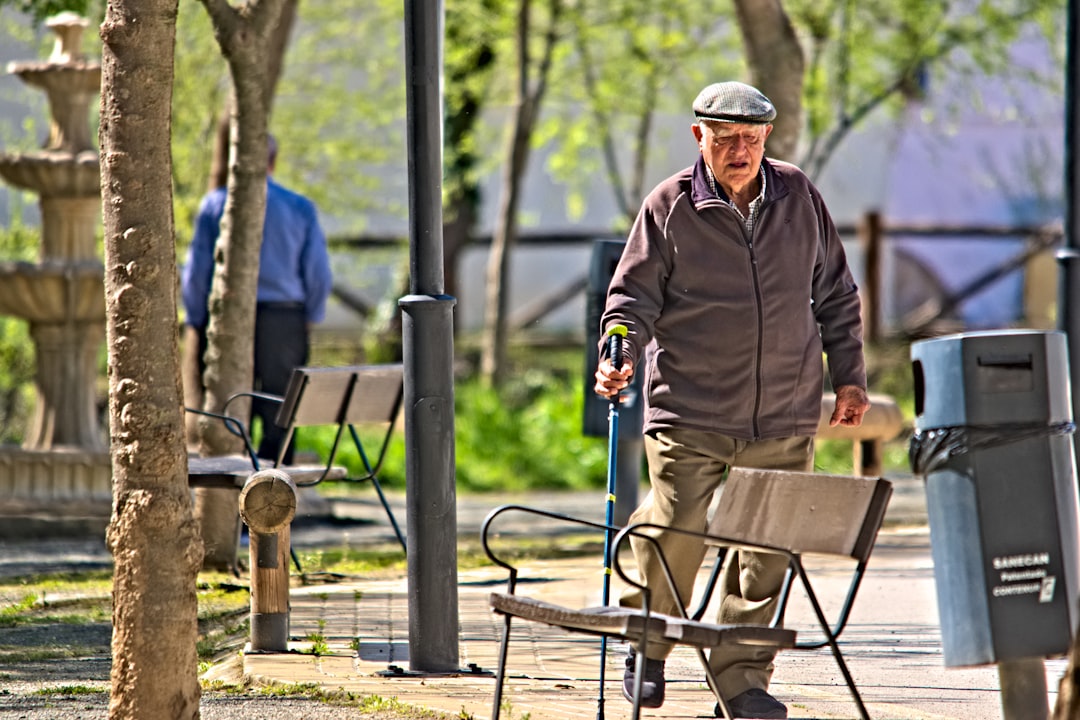
Sideways walking helps maintain the lateral hip stability and coordination that everyday movement requires. Face a clear, uncluttered stretch of floor with wall or countertop support within arm’s reach. Step right foot to the side, then bring left foot to meet it, moving a few steps in one direction before reversing. Focus on smooth, even strides and upright posture. Continue for 10-12 steps each way.For an additional challenge, add a slight squat as you walk or move further from your support as confidence increases. This movement program strengthens often-overlooked hip and outer thigh muscles, contributing significantly to side-to-side balance—a frequent culprit in common falls. Let sideways walking become a regular companion to your daily route and enjoy the feeling of stability it brings.
11. Functional Reach
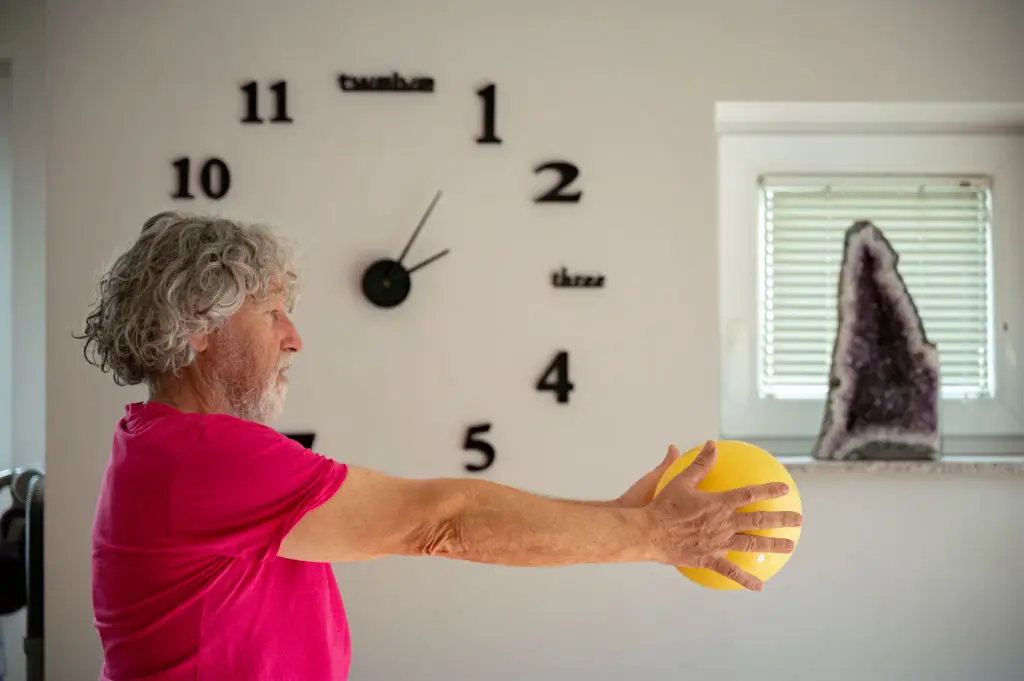
The functional reach exercise gently simulates real-life activities—like reaching for a shelf or closing a car door—while training balance and arm strength. Begin by standing tall, feet hip-width apart, with a sturdy chair or wall nearby. Extend your right arm forward at shoulder height, slowly reaching out as far as is comfortable, then return to starting. Alternate arms and repeat 8-10 times on each side.If needed, keep your other hand resting on a chair for support, or try reaching to the side and overhead to increase complexity. This move activates your core and tests forward balance, while helping you trust your body's ability to shift weight safely. Take it slow, focus on control, and build from simple to more challenging ranges at your pace.
12. Standing Knee Lifts
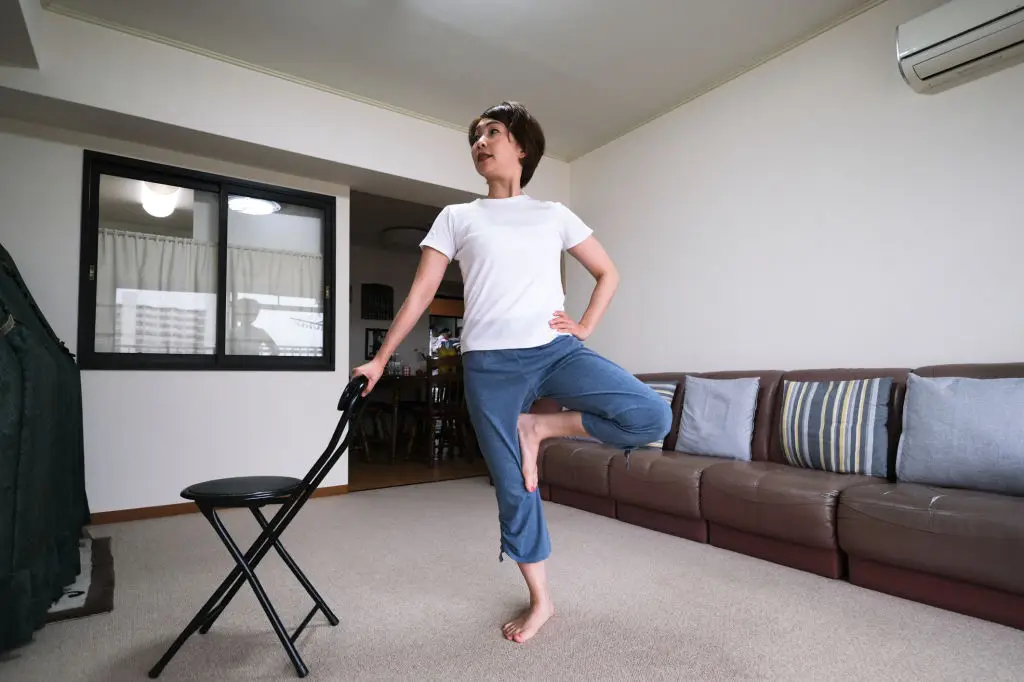
Standing knee lifts are an excellent way to train both balance and the muscle control needed for activities like stepping over obstacles or climbing stairs. Stand behind a chair or counter, gently lifting your right knee toward hip height while keeping your torso upright. Lower slowly, then repeat with the left leg. Alternate legs for 10-12 repetitions each.Support yourself fully at first, or progress by adding a longer hold at the top. To make it more challenging, try moving your arms or closing your eyes for just a moment. This controlled motion builds the muscles of your hips, thighs, and core, all key for reliable balance in daily life. Remember, every lift—no matter how small—is a step toward greater confidence and independence.
13. Wall Push-Ups
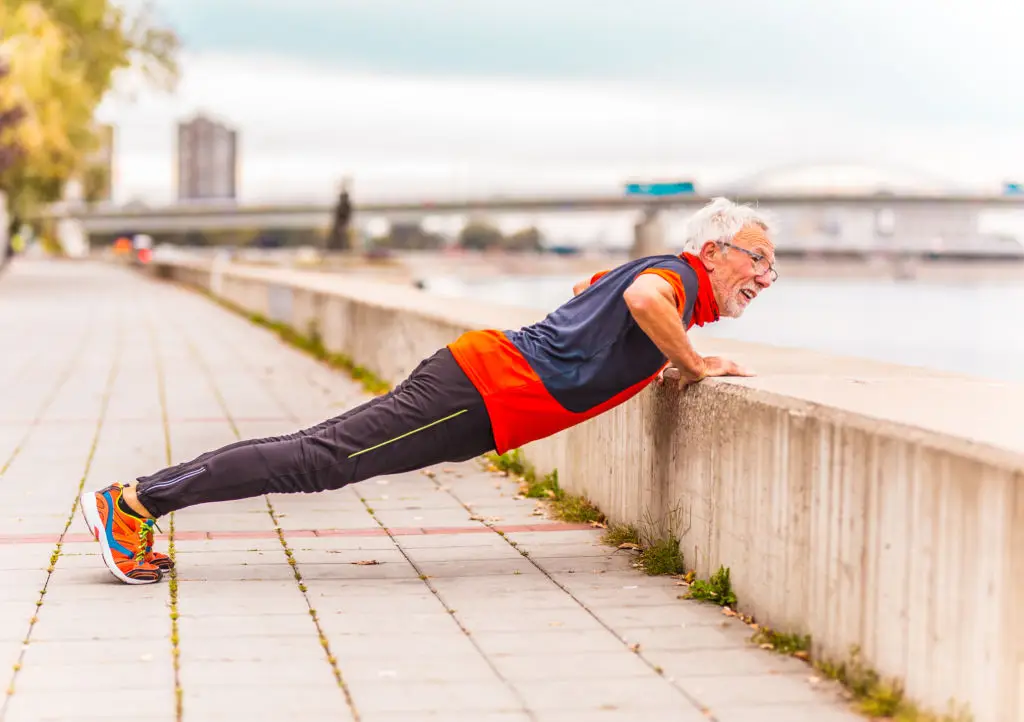
Wall push-ups may surprise you as a balance exercise, but upper body strength is crucial for supporting yourself in unexpected moments. Stand facing a sturdy wall, a bit more than arm’s length away, feet shoulder-width apart. Place your palms on the wall at chest height. Bend your elbows as you slowly lean toward the wall, then press back to standing. Repeat for 10-15 reps.Vary the intensity by changing your stance distance from the wall; closer is easier, further works more core and arms. If wrist discomfort arises, try fists or forearms instead. This move is especially helpful for maintaining strength needed to push yourself up from the floor, stabilize with your hands, and keep your overall balance system vibrant.
14. Stepping Over Obstacles
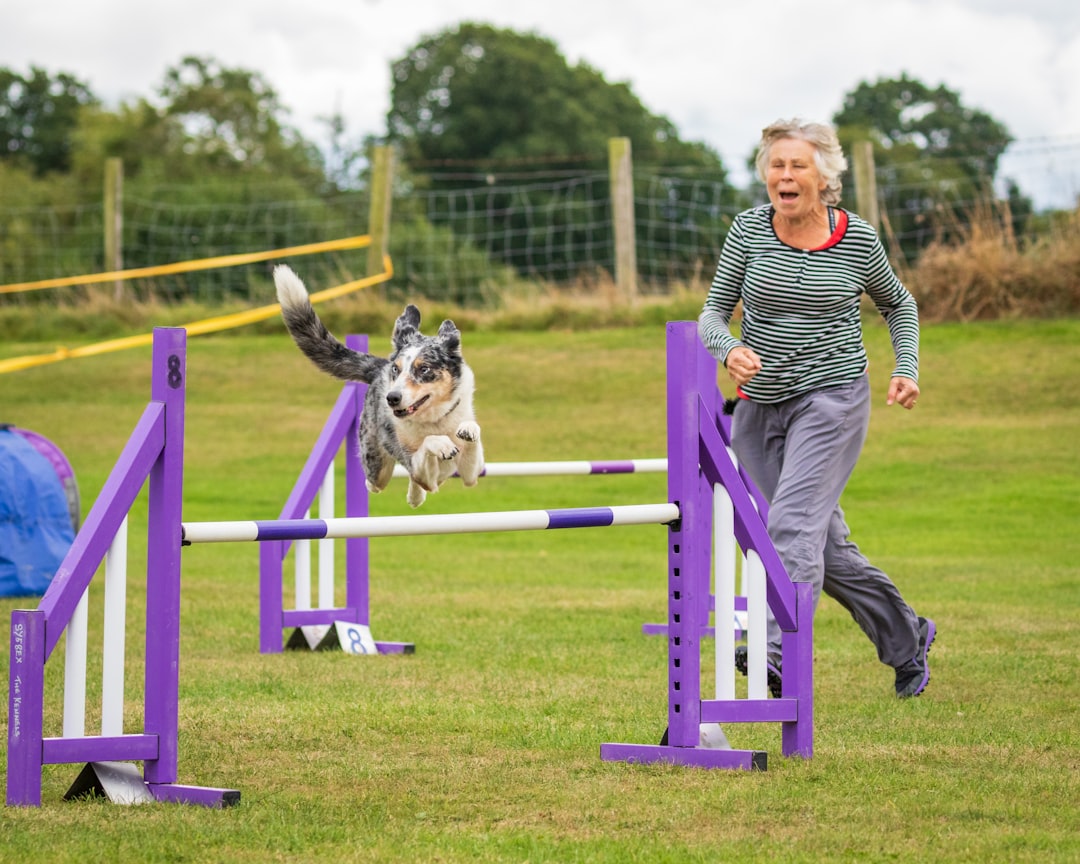
Daily life is full of things we need to step over, from shoes to pet toys. Practicing safe obstacle navigation can make a significant difference. Place a soft pillow or small object on the floor. Stand with feet together, behind your support if needed. Slowly lift your right foot to step over the obstacle, then your left, moving with intention. Turn and repeat the motion in the opposite direction for 6-10 steps.If balance is tricky, hold onto a chair or lightly touch a wall. Increase the challenge with a taller or longer object only when confident. This drill strengthens your legs, enhances coordination, and builds the quick adjustments needed to recover if your path isn’t perfectly clear. Each step helps create a more responsive and sure-footed you.
15. Dynamic Balance: Eyes Closed/Soft Surfaces
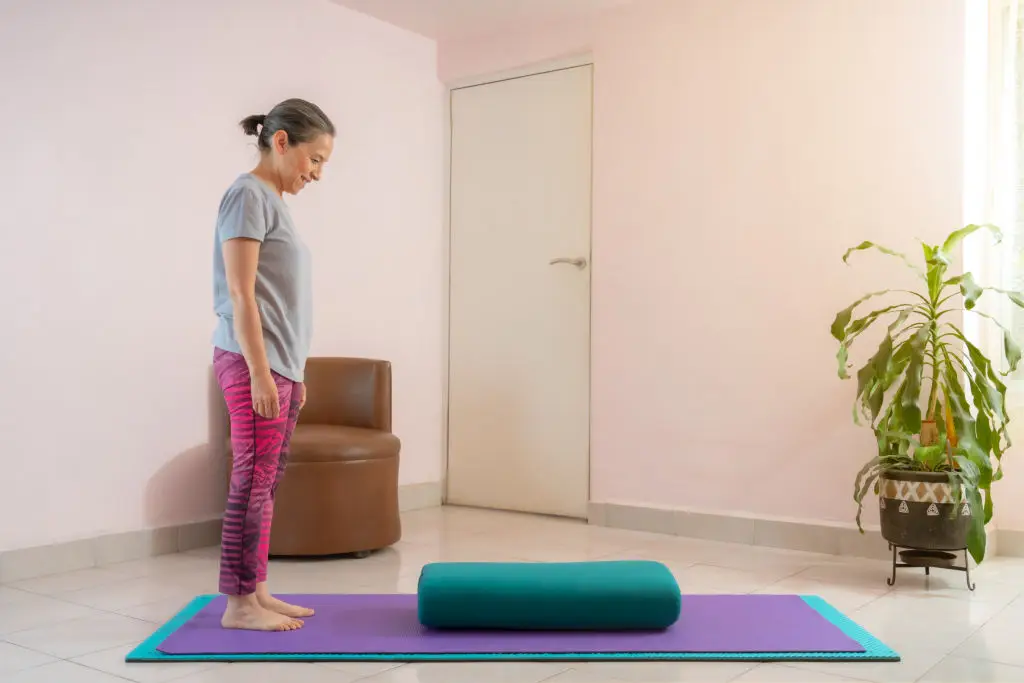
As your skills grow, introducing carefully managed challenges like standing on a soft mat or briefly closing your eyes (always with support nearby) gives your balance systems an extra test. Begin by standing with feet hip-width apart on a padded mat or folded towel, hands on a counter for safety. Gradually shift weight side to side, or try a gentle single-leg stand.When you’re comfortable, close your eyes for just 2-3 seconds—always ready to grab support. This trick quietly “wakes up” your sense of body position, helping prepare for everyday changes in lighting or ground. Use these advanced moves sparingly and never alone. They’re a celebration of progress, not a requirement! Choose what supports you best, knowing that confident, safe movement is the ultimate goal.
16. Clock Reaches

The Clock Reach is a highly functional exercise that trains dynamic balance and multi-directional stability, essential for navigating everyday spaces. Stand tall on your left foot behind a sturdy chair. Imagine you are the center of a clock face. Extend your right foot to touch various points on the "clock" (e.g., 3, 4, 5, 6, and 7 o’clock) without putting significant weight on the moving foot. Keep your torso upright and your focus forward. Aim for a sequence of 5 touches before swapping legs. This controlled motion builds hip, ankle, and core strength while specifically preparing your body to remain stable when reaching or maneuvering around objects.
17. Head Turns in Place (Vestibular Challenge)

This exercise targets the vestibular system—your inner ear's balance sensors—which is crucial for maintaining equilibrium while moving your head. Stand with your feet hip-width apart and your hands resting on a counter. Slowly turn your head to the right as far as is comfortable, then slowly to the left. Repeat 10 times. Once comfortable, you can gently progress by performing head nods (up and down). This controlled movement retrains the connection between your visual cues and your inner ear, helping reduce dizziness and the feeling of instability that often accompanies quick turns or looking up/down, common triggers for falls.
18. Tandem Stance with Catch

The Tandem Stance with Catch adds a gentle, reactive component to the tightrope walk. Stand in the heel-to-toe position near a counter. Once stable, have a partner (or use a shelf) toss a small, lightweight object (like a scarf or small beanbag) gently toward you, requiring you to slightly shift your weight or reach to catch it. The act of reacting to the object forces your body’s stabilizing muscles to engage quickly. Start with easy catches close to your body and gradually increase the distance. This drill enhances the fast-twitch muscle response needed to recover your balance when an unexpected bump or slip occurs.
19. Dynamic Stair Taps

Dynamic Stair Taps provide the benefit of a step-up but focus on quick foot placement and ankle stabilization, which is key for navigating curbs and thresholds. Stand facing a low, sturdy step with a handrail nearby. Lightly tap your right toe on the step and immediately return your foot to the floor. Alternate quickly between your right and left feet, maintaining a rhythm similar to quick marching. Aim for 30 seconds, focusing on precision rather than height. This exercise builds the fast ankle and foot coordination needed to avoid tripping over small obstacles and strengthens the often-weakened muscles that control foot lift.
20. Toe and Heel Lifts (Foot Stability)
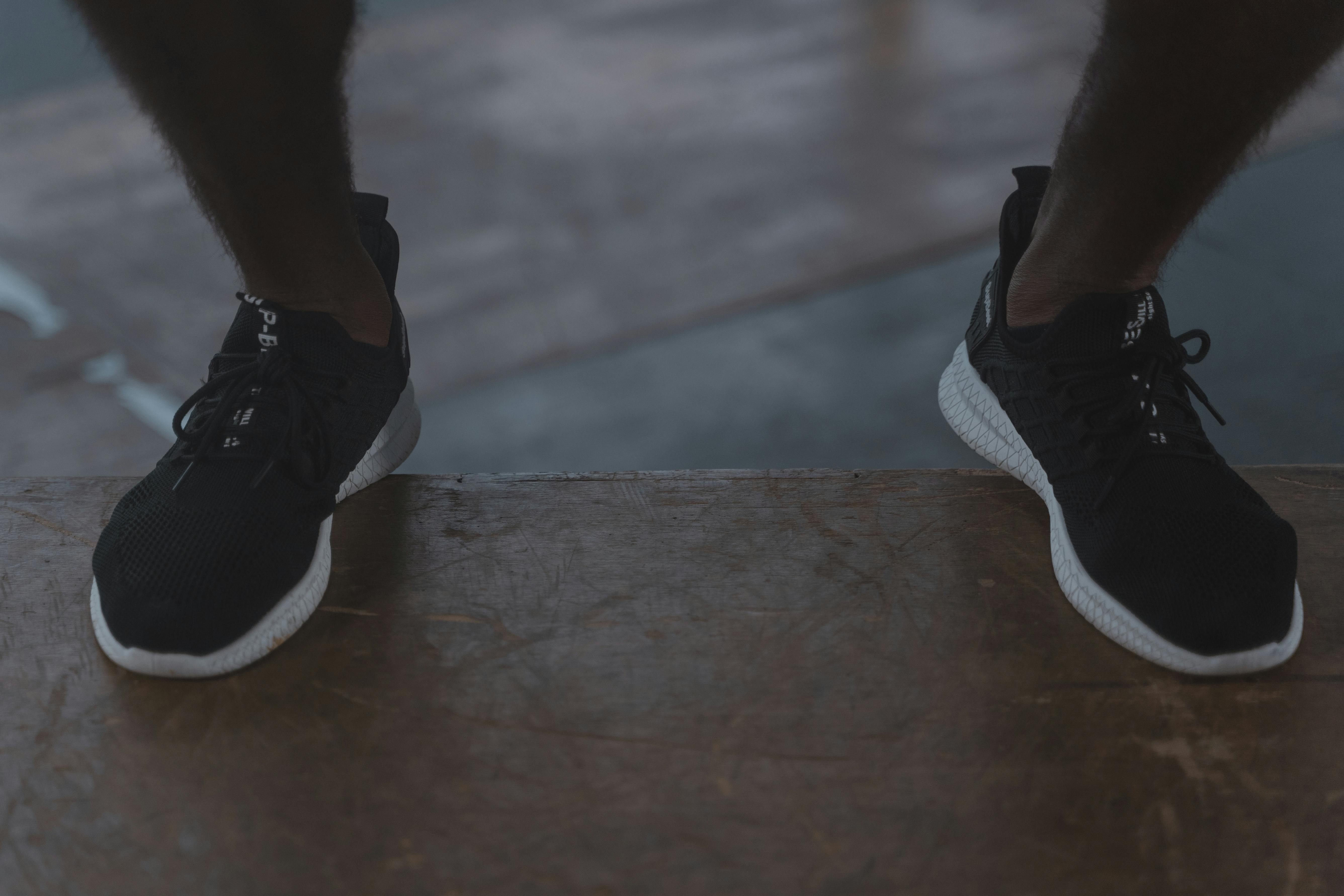
To address balance from the ground up, the Toe and Heel Lifts specifically train the tiny, critical stabilizer muscles within the foot. Stand with both hands resting lightly on a counter. In a slow, rocking motion, lift only your toes, keeping your heels grounded (hold 1 second), then lower the toes and lift only the balls of your feet and toes, keeping the heels grounded. Alternate these two movements slowly for 10-15 repetitions. This action increases foot arch strength, improves blood flow, and enhances the proprioceptive feedback from your feet, giving you a better "feel" for the ground—a fundamental requirement for confident movement.
Moving Forward with Confidence

Building and maintaining balance is a gift you continually give yourself—one thoughtful practice at a time. These exercises aren’t about chasing past abilities, but about growing into your present strength, resilience, and independence. The wobble or hesitation you might feel at first is natural; every attempt is progress, and each session is an act of self-care. With consistent effort and gentle modification to match your own pace, you’ll begin to notice your movements feeling steadier, your confidence rising with each step.Remember, your journey toward fall prevention and balance is deeply personal. Some days you’ll breeze through a routine; other days, steady may simply mean trying. Celebrate each gain—no matter how small—and recognize the powerful message you’re giving your body: it is worthy of care, attention, and trust. Let these exercises become part of your daily rhythm, supporting not just your physical safety, but also your spirit of independence and hope for every season of life.